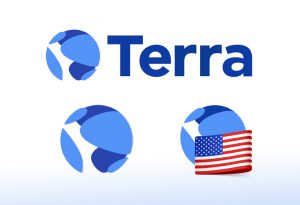
Table of Contents
ToggleStable currencies are undoubtedly the fruit of smart contracts that have brought the most adoption into the crypto ecosystem, even though they are still in search of their final form. In this regard, today I want to explain to you what is Neutrino USD, the algorithmic “stablecoin” of the Waves blockchain.
It is likely that the conjugation of the words “stable currency” plus “algorithmic” will bring back bad memories. These types of tokens, which seek to break away from traditional methods of attaching value to a stablecoin, have failed in several of their attempts to revolutionize the ecosystem.
With the experience of UST (Terra’s stablecoin) still in place, the team behind Neutrino, from the beginning, came up with a diverse approach to bring this coin to life. So far, overcoming major shocks, it is still holding its own in the fast-paced crypto-market. Let’s see what Neutrino is all about.
What is USDN? The Waves algorithmic stablecoin
Neutrino USD, identified with the ticker USDN, is an algorithmic stablecoin that tends to hold a 1-to-1 peg with the US dollar. The backing for this peg is provided by the WAVES token, the native currency of the blockchain that bears the same name.
Unlike UST, the most popular stable currency on Terra’s blockchain, all transactions related to USDN are managed by smart contracts. In this way, transparency and control on the part of users is greatly increased. For example, in a simple way we can observe:
- The issuance of USDN
- Amount of USDN in circulation and deposited
- Rewards derived from staking
- USDN to create
Its birth dates back to that of the Neutrino protocol in 2019. Its operating system allows deviations from the peg with the U.S. dollar to be corrected by arbitrage, which take advantage of momentary drops to make profits while restoring stability. However, it is not the only method the protocol has to return this peg, as the sustainability of USDN is supported by NSBT and SURF tokens, which we will discuss later.
However, before continuing with the analysis of this stablecoin, let’s review what an algorithmic stablecoin is and what characteristics make it unique.
Algorithmic currencies again?
It is obvious that many relate the word algorithmic to UST and its resounding failure. The question that may quickly arise is, after such a disaster that led to the disappearance in just a few days of an ecosystem that came to represent more than 60 trillion dollars, why are we once again talking about algorithmic stable currencies?
Beyond the accuracy of the question, it is necessary to point out that Neutrino is a protocol whose birth, as I remarked previously, is prior to that of Terra’s network and its subsequent popularity. When we talk about Neutrino, we usually refer to its best known product, the stable currency that has peg with the dollar, USDN. However, Neutrino is a protocol that facilitates the structure to create stable algorithmic currencies, related to the asset that its creator needs.
For example, we could create an algorithmic currency related to other currencies such as the Euro, the British Pound or even BTC or ETH.
However, it is likely that not all of our readers know how an algorithmic stable coin works, so let’s review how it works.
How do traditional stablecoins work?
In this segment of currencies, the most widely adopted and popular are those that are collateralized. This category is occupied by currencies such as USDT, USDC or DAI. With respect to the first two, in order to obtain value, they count for each stablecoin issued with the equivalent of one dollar deposited in a bank account. This mechanism of creation allows them to maintain a solid peg to the detriment of decentralization and decoupling from traditional finance.
DAI of MakerDAO, has proposed an alternative system. The collateralization of DAI, is given by means of cryptocurrencies, but as these are volatile, to ensure the sustainability of the peg with the dollar, it is necessary that our collateral exceeds the amount of DAI issued in order to absorb sharp falls in the price of the currencies left as collateral. Although it is a robust system that has withstood times of extreme turbulence, it has become inefficient from an economic point of view, limiting the possibility of scalability.
Now, how do algorithmic stablecoins work?
The approach is simple, by creating an algorithmically stable currency we seek to avoid:
- Dependence on a FIAT currency
- Necessary over-collateralization in DAI
Achieving both objectives, this type of coin pursues:
- Decentralization
- Scalability
- Lack of restrictions
This is how these currencies maintain peg with the asset they wish to be linked to, in this case the dollar, by means of an algorithm. It is responsible for controlling the price of USDN, taking into account the buying and selling pressure on it. Therefore, if there is significant buying pressure, the algorithm drives USDN above the dollar, generating opportunities to sell USDN to return to peg. In the opposite case, if the selling pressure is too high, the algorithm will send the USDN quote below the dollar, generating buying pressure.
This whole mechanism, related to price and market action, is supported by different tokens, such as WAVES and NSBT. Let’s get to know them and understand how USDN works.

How does Neutrino USD work?
After the introductions and explanations given up to this section, we can begin to analyze how USDN works in practice, leaving behind the theoretical or abstract part. Let’s see how USDN is issued, how it sustains its peg and what possibilities it offers us to be holders of this stable currency.
How is USDN created?
To “mine” or “mint” new USDN units, it is necessary to deliver in exchange the desired amount, in nominal terms, of the WAVES token.. Let us exemplify, with concrete numbers, the process of “mining” USDN, and eliminate the possibility of doubts:
- After entering the official Neutrino site, I go to the “Swap” tab.
- There, simply enter the amount of WAVES you wish to deposit in the contract.
- At the time of writing this article, one WAVE unit is equivalent to US$4.58, with a quotation of USDN 0.95.
- Therefore, for my unit of WAVES, I will receive 4.48 units of USDN
- When we want to get rid of this USDN and recover our WAVE, we simply perform the reverse transaction and the USDN units will be “burned” or destroyed.
Although this system eliminates any type of limitation linked to the need for over-collateralization, the way it works tells us that if the WAVES price falls below $4.58, our newly issued USDN will be below peg with the dollar.
Algorithmic stable currencies need a large flow of money entering their system on a constant basis to achieve sustainability. When the opposite happens, and users decide to withdraw their capital, in this case by exchanging USDN for WAVES, the effect is usually very difficult to contain and the drops in the peg are vertiginous.
What benefits does USDN offer?
Like UST, in order to achieve massive promotion and adoption of its products, USDN’s communication campaign has focused on the returns obtained by staking USDN. Presenting the opportunity to generate returns of 15% per year, in a currency that should tend to be priced or exchangeable for a dollar, does not find much competition in the market.
In any case, Neutrino highlights the sustainability of the rewards offered as a differentiation from the system created by UST, Terra and Anchor Protocol.
When we deposit our WAVES, to “mine” new USDN units, the smart contract in which we do so is designed to:
- Delegating WAVES with validators from the blockchain of the same name.
- Obtain rewards in the form of WAVES
- Exchange those WAVES for new USDN
It is through this mechanism that Neutrino states that its differences with Terra’s UST are the following:
- Transparency, thanks to the implementation of a smart contract system
- Sustainable returns
- Limits to the issuance of USDN
These returns for depositing our USDN are not the only ones we will be able to generate on this platform. Let’s see what NSBT is all about and what possibilities it offers.
NSBT, the Neutrino governance token
When depositing our USDN, we will receive in exchange the platform’s governance token, identified with the ticker NSBT.Beyond the attractive return percentage it offers us, of 23% per year, when depositing them we will obtain a new token called gNSBT.
By holding the latter, we will be able to increase the daily USDN limits that we will be able to issue or “burn”. This type of mechanism seeks to:
- Retain value in the Neutrino protocol
- Incentivizing the purchase of NSBT
In addition to the mentioned returns that we can obtain with NSBT, this token also represents access to the governance of the protocol. Its members have the opportunity to get involved in the discussion of proposals and to participate by voting in shaping the future of Neutrino.

The future of Neutrino USD
Reality tells us that all these elegant and well thought out mechanisms aimed at sustaining USDN peg with the dollar, to date have not acted as the panacea that will finally allow us to find the definitive solution for a stable algorithmic currency to really succeed, in a wide sense of the word.
Looking at the chart representing the price of USDN, the first impression that we can take away with certainty is its lack of stability. Whether due to its own factors, rumors of insolvency, or external factors, the fall of Terra, USDN has struggled throughout its existence to maintain its peg to the dollar.
In short, any stable currency is nothing more than a promise that at any time, we will be able to exchange each of its units for the same amount of another asset, in this case U.S. dollars. As in any promise, beyond the sumptuous mechanisms behind it, confidence in the fulfillment of the promise plays a key role in the sustainability of such schemes. In short, if there is a loss of confidence, probably nothing can contain the fall of USDN.
In favor of the USDN, if we can conclude that despite these mentioned setbacks, the currency has slowly tended to return to a value close to that of the dollar, after having fallen to 0.78 and 0.82. Naturally, the search for a mechanism that will allow us to leave behind collateralized stable currencies and their limitations forever is not yet over.






